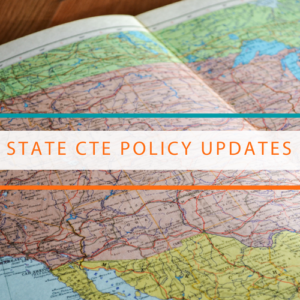 The majority of 2018 state legislative sessions have come to a close. During these legislative sessions, states enacted budgets that illustrate a continued commitment to invest in Career Technical Education (CTE) and opportunities for learners to earn credentials that translate into high-skill, in-demand occupations.
The majority of 2018 state legislative sessions have come to a close. During these legislative sessions, states enacted budgets that illustrate a continued commitment to invest in Career Technical Education (CTE) and opportunities for learners to earn credentials that translate into high-skill, in-demand occupations.
In California, Governor Jerry Brown signed a Fiscal Year 2018-2019 budget that invests millions in CTE-related programs and initiatives. The budget includes $164 million ongoing funds to establish a K-12 specific component within the Strong Workforce Program, an initiative that aims to improve CTE programs and increase the number of learners enrolled in CTE programs that culminate in high-wage, in-demand jobs. The budget also includes $6.7 million in funds to offer 338 additional CTE programming slots and to expand CTE to thirteen additional sites in California.
Additionally, the budget provides $100 million one-time and $20 million ongoing funds to establish a statewide online community college. Currently, 2.5 million adults in California between the ages of 25 to 34 only have a high-school diploma, despite an estimated 65 percent of jobs requiring some form of postsecondary education and training beyond high school by 2020. The online community college will provide a cost-effective way for working adults in that age range to earn short, career ready credentials.
In Oklahoma, Governor Mary Fallin signed a Fiscal Year 2019 budget that increases the amount of funds appropriated to the State Board of Career and Technology Education by more than $12 million when compared to last year’s budget. This investment aligns with the the state’s efforts to build and strengthen career pathways through the Oklahoma Works initiative, which aligns education, resources, training and job opportunities to bolster Oklahoma’s workforce.
Virginia’s 2018-2020 biennial budget provides an additional $2 million in grant funding each year for the New Economy Workforce Credential Grant Program. This program, created in 2016, covers up to two-thirds of the cost of a noncredit workforce training program, requires the Board of Workforce Development to maintain a list of credentials and noncredit workforce training programs in high-demand fields, and encourages participating institutions to award academic credit for credentials earned.
Brianna McCain, Policy Associate
Tags: budget, California, Oklahoma, Virginia

